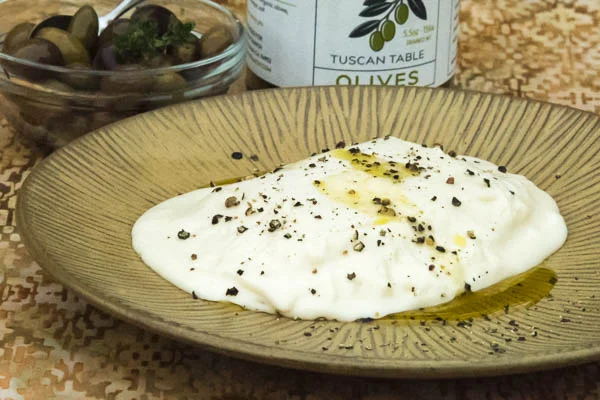Some key facts about the new Oxford Companion to Cheese:
- It weighs 3-1/2 pounds, about as much as a whole Saint-Nectaire.
- It covers 855 subjects, beginning with Abbaye de Tamié (a French washed-rind wheel) and ending with Ziraly Panir (an Iranian sheep cheese).
- It required the help of 325 contributors from 35 countries. I wrote two entries: on California cheesemaker Franklin Peluso, whose Teleme is pictured above; and on the Swiss Cheese Union.
I think any cheese enthusiast would want to own this hefty reference work, which doesn’t answer every question about cheese but a lot of them.
“We hope readers will dip into one entry, only to emerge someplace else entirely, wandering along natural paths of discovery,” wrote Catherine Donnelly, the project’s editor-in-chief, in her introduction. That certainly happened to me when I first cracked it open and skipped from “bread pairing” to “Piave” to “pregnancy advice.”
Donnelly, professor of nutrition and food science at the University of Vermont, spoke with me by phone about this monumental endeavor:
Start to finish, how long?
It was four years in the making. Max Sinsheimer, my editor at Oxford University Press, started in 2012, and I was involved for about three years. There was a failed effort a few years earlier. When Max took on the role, he wanted to make sure he could find someone who could get the job done. I had an approved sabbatical from the University of Vermont, which I used to frame all the headwords that made for the scope of the book.
I leaned heavily on international colleagues to make sure we included European authors who could capture the traditional cheeses that we wouldn’t know about. You can edit entries into perfect English. What you can’t do is substitute the passion that international authors bring to their entries.
Some of us also have the The Oxford Companion to Wine or The Oxford Companion to Beer or both. How was this project different?
The landscape ofcheese is changing so quickly here in the U.S. Much more has been researched and written about wine. Cheese is a work in progress, especially in the U.S. But another difference is the collective concern about what’s going to happen to the global cheese market with regulations being promulgated. So there was a sense of urgency among the contributors that maybe this book was a way to help save and memorialize traditional cheesemaking. That was not our directive, but boy, did that feeling come through from our contributing authors, and it wasn’t like we sent out a memo saying, “Now’s your chance.” On the one hand, the future could not be brighter for the vitality of rural landscapes because of cheesemaking. But there’s also this omnipresent threat that we all feel.
Some of the regulatory issues that we took on, it just needed to be said. Like the entry on wooden shelves in cheesemaking. The U.S. perspective on that is not universally shared.
What were your criteria for inclusion? How did you decide what belonged and what didn’t?
I’m a scientist so there are a lot of entries that deal with cheesemaking microbiology. There are such exciting developments regarding microbial communities on cheese and the molecular tools we can use to understand how these communities behave. Because I leaned heavily on scientists, there are probably more technical entries than there otherwise would be.
But we wanted to look at as many dimensions of cheese as we could. Heather Paxson (professor of anthropology at M.I.T.) was invaluable in pointing us to authors who could write entries on cheese in literature, cheese in art, and cheese from the anthropology perspective. We have an entry on Wallace and Gromit. Heather would say, “Take off your scientific hats. We have to broaden our horizons.”
I notice that you have entries for individual cheese shops. The Oxford Companion to Wine has no entries for wine merchants. What was your thinking here?
We worked hard not to offend anyone by omission, but if you were going to Europe and had limited time and wanted to see representative cheese shops, which ones should not be missed? And what shops are doing innovative things? We approached it like that.
There are certainly some quirky entries, like the one on “magical thinking” and another on “magic tricks.” What’s that all about?
Just to broaden the audience and cover places where cheese intersects society in ways that you wouldn’t maybe think it could. “Sexual imagery” was one that I wouldn’t necessarily have included, but the editorial board felt strongly that we could work with it.
The most controversial entries?
I had a much longer list of cheeses but it was taking too much space, so some of those ended up getting cut. Instead we went with more representative cheeses, knowing we could not be all-inclusive. So when it came to those selections, certainly people were passionate about their choices. If there were a different group of people around that table, the choices would have been different.
That entry on pregnancy advice...not controversial?
Not at all. At a meeting on the science of artisan cheese, I heard Heather Paxson give a talk about the advice being given to pregnant women regarding cheese consumption. It was one of the best presentations I’d ever seen, and I felt it needed to be included.
A couple of your favorite entries? The hidden gems?
The one I love, which could have been really bland, was Sylvie Lortal’s entry on Louis Pasteur. (Lortal is research director at INRA, the French National Institute for Agricultural Research.) She ends the entry with how Pasteur would write a little love note to his wife at night. How would we know that unless we had reached out to a French scientist who made him so human? I think of the Companion like layers of onion that you just keep peeling.


